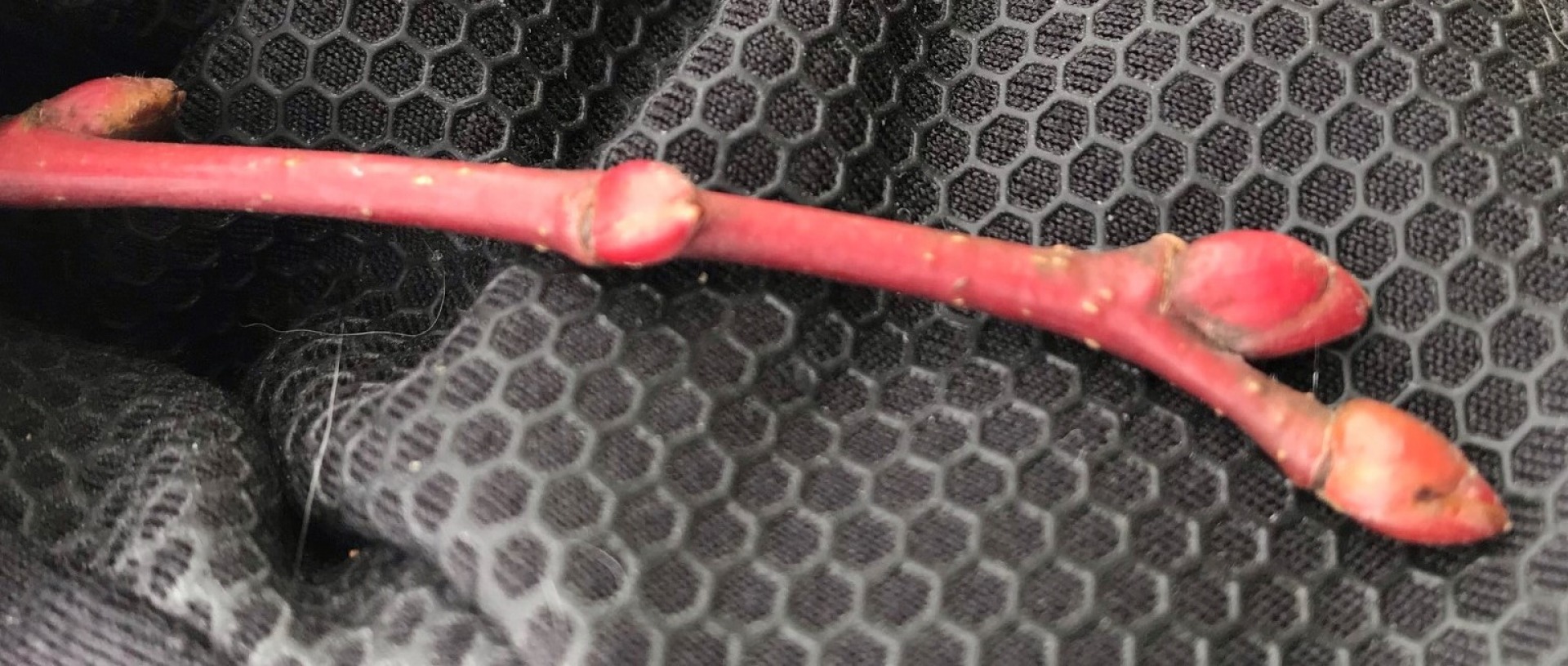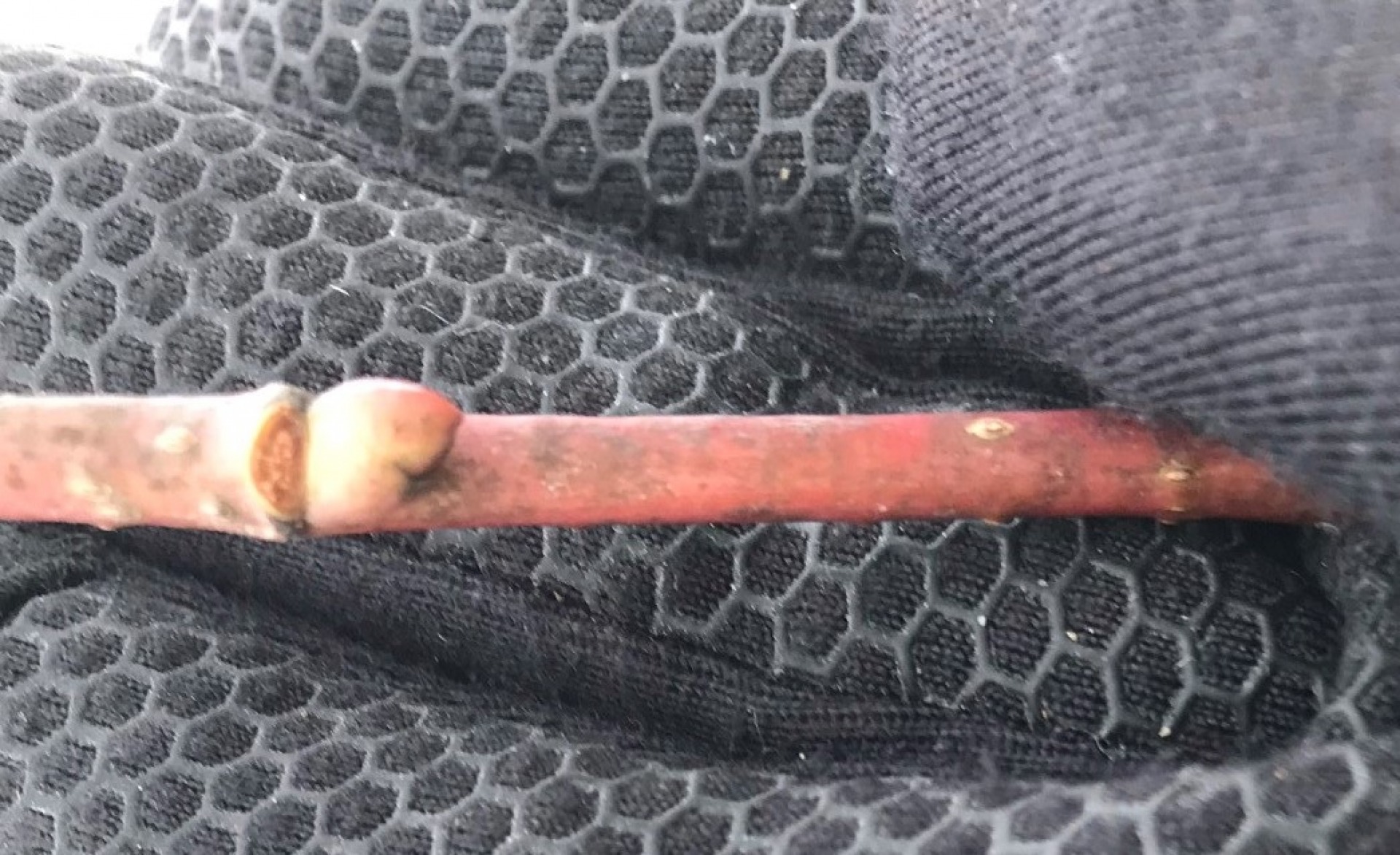Cool, crisp air nips the tip of my nose as I walk through the wooded trails at Hitchcock Nature Center. I am surrounded by a bounty of beautifully contorted skeleton-like trees. The long, slender, graceful limbs sway in the wind, preforming a mesmerizing dance that solicits and commands my attention.
During the growing season, these trees are identified and known by looking at leaves & using their shape, number, & arrangement. Once winter comes around deciduous trees lose their leaves making identification much harder, but not impossible! You just need to take a little extra time & look for new types of clues to help you.
When trying to identify a tree when you have no leaves to help you is tricky but twigs & buds are a great way to start. Buds are the packets of growing material that will eventually become next years leaf, twig, or flower. They are covered by hard, protective scales in the winter. If a bud is located at the end of a twig it is called a terminal bud but if it is located along the sides of the twig then it is called a lateral bud.

Bud arrangement is one of the first thing to notice on a twig. There are only a handful of trees that have opposite buds along the stem and there is an easy saying to remember them, always remember “M.A.D. Horse Bucks”. This stands for:
M-Maple
A-Ash
D-Dogwood
Horse Chestnuts
Buckeyes
Catalpa trees have buds that make a ring around the stem also known as whorled buds but the vast majority of deciduous trees have buds that alternate along twig. Once the bud pattern is determined, look at the bud shape, size, and color.
The next set of clues to use to aid in identification are the leaf scars and twig bark. Leaf scars are the grooved shapes left on the twig where the leaf was once attached. They can be different shapes and sizes and have differently arranged dots, the dots are remnant vascular bundles that once moved water and sugars from the tree to the leaf and visa-versa. Sometimes it's easier to look at leaf scars instead of buds to see if the tree has opposite or alternate arrangement.

Identification guides can seem daunting to anyone who has not had a lot of practice using them. If this is how you feel, think of them like a choose your own adventure book but in the form of a guide. Once you can get through the terminology then it gets fun, and your observations and choices will lead you to new discoveries. There are many twig ID guides out there. I like the guide from University of Wisconsin-Stevens Point which I have posted below. This guide has a great glossary that explains a lot of the terms used above and a few more to boot!
Join me in our very next blog as I take these winter tree ID skills into the field & show you some real world examples!
Next BlogGet a full year of free access to all Pottawattamie County parks.
Become a member of the Pottawattamie Conservation Foundation